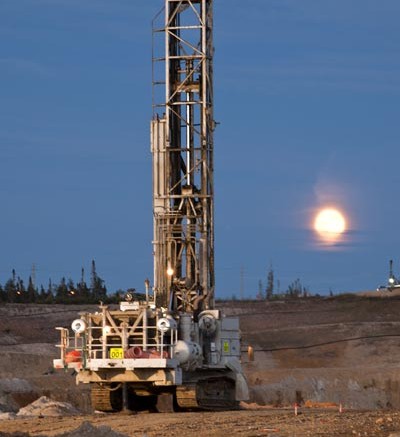Other diversified mining giants have had second thoughts about diamonds, but Anglo American (US-OTC: AAUKY; LSE: AAL) never seemed in doubt about its interest in De Beers — the world’s largest diamond miner by value.
Anglo bought out the Oppenheimer family’s 40% stake in De Beers for US$5.1 billion — more than doubling its interest to 85% — in a deal announced in late 2011. (The government of Botswana owns the remaining 15% stake in De Beers.)
And now with iron-ore prices hitting five-year lows, mining analysts at Investec Securities see diamonds as a bright spot for Anglo — and something that sets it apart from its main rivals.
“De Beers is the single most important diamond producer in the world and, in our view, the most attractive business unit within Anglo American,” Investec mining analysts Marc Elliott and Albert Minassian write in a client note.
“Our commodity-price assumptions imply that De Beers will transform the shape of Anglo American going forward, and we see this as clearly differentiating the stock versus the other diversified miners.”
The analysts peg De Beers’ value as a stand-alone entity at US$19 billion — a figure they say could rise if diamond prices proceed at current rates.
Investec estimates Anglo’s stake in De Beers will generate 40% of group earnings by 2017, compared with 26% in the first half of 2014.
While Anglo’s iron-ore and manganese business has reaped the most earnings, declining iron-ore prices are lowering the unit’s importance. While responsible for 42% of underlying earnings last year, iron ore and manganese could contribute only 25% this year.
The analysts model high rough diamond-price increases of 8% (compound annual growth) next year, followed by 4–5% increases from 2016 to 2020, and no growth thereafter. Given the paucity of diamond discoveries and recent price rises, they say these assumptions are conservative.
“We believe the diamond market is set to experience a combination of rapidly rising demand from China in conjunction with an underinvested industry that will be unable to supply sufficient product,” the report reads. “These conditions are analogous to those that lead to the commodity ‘super-cycle’ in metal and steelmaking raw materials that started in 2003.”
BHP Billiton (NYSE: BHP; LSE: BLT) sold its sole diamond mine — an 80% stake in Ekati — to Dominion Diamond (TSX: DDC) (then Harry Winston Diamonds) in November 2012, while Rio Tinto (NYSE: RIO; LSE: RIO) kept its diamond assets after a 15-month review of its diamond business in June 2013.
Both BHP and Rio reconsidered diamonds because they could not achieve the scale to make them a profitable part of their operations.
After incorporating a commodity price deck with substantially lower iron-ore and platinum group metal prices, Elliott and Minassian lowered their price target on Anglo to ZAR286.94 from ZAR314.00. (The shares recently traded at ZAR256.15, or $25.) However, they have rerated Anglo relative to its peers and upgraded the stock to a “buy” from a “hold” recommendation.


Be the first to comment on "De Beers the jewel of Anglo American as iron-ore price drops"